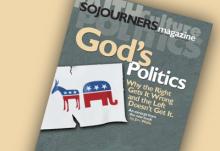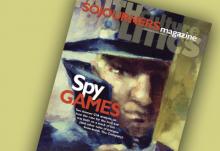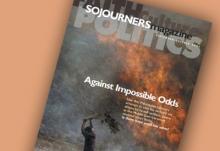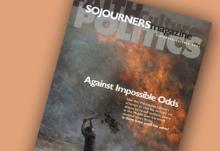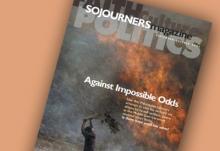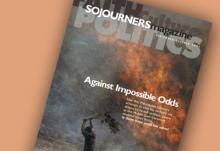An interview with Palestinian leader Hanan Ashrawi on feminism, faith, and the future of the Palestinian cause.
Palestine

Volunteers from around the world work for peace in Palestine simply by being there.
The Sabeel Ecumenical Liberation Theology Center in Jerusalem hosted more than 500 representatives from 31 countries in April to address the dangers of Christian Zionism.
Standing for peace in a war zone is never easy, but it's becoming next to impossible for Middle East human rights groups.
For years activists have called attention to the plight of the Palestinians through protests, teach-ins, and seminars.
Nurit Elhanan and her husband, Rami, both 52, are campaigning for an end to the Israeli occupation of the Palestinian territories. What's remarkable about their peace campaign?
The Glasgow University Media Group decided to research how much about the Middle East conflict students learned from watching TV. This is what they found.
Many Christians who support Israel out of a fundamentalist Zionism forget that they have Palestinian brothers and sisters in Christ who suffer under the occupation. Collective punishments through fences, walls, checkpoints, and curfews fail to distinguish between the violent and the nonviolent. Israeli soldiers often do no better, as civilian casualties mount in their war on terror.
"We are all traumatized," said Elias Mishrawi, a Christian Palestinian businessman and political activist from Beit Sahour. "We no more know what is normal life.... Not only do I not see a light at the end of the tunnel. I don't see a tunnel."
While such despair is prevalent among Palestinians, following are the stories of three Palestinian Christians living and working in hope of peace while confronting the violence of occupation.
On April 4, 2002, Rev. Mitri Raheb was detained by Israeli soldiers as they ransacked the compound of Christmas Lutheran Church in Bethlehem, smashing windows, computers, and artwork. That attack, and the curfews that followed, have set back, but not squelched, a vision rooted in nonviolence and "contextual theology."
After a seminary education in Germany gave him answers to questions his people weren't asking, Raheb asked himself: What is good news for people who hear bad news every day?

You wouldn't know it from media reports, but there's a hopeful movement being born in the Middle East
My wife, Joy, my son, Luke, and I had dinner recently with our friend Michael Lerner and his wife, Debora, in their Berkeley, California home.
